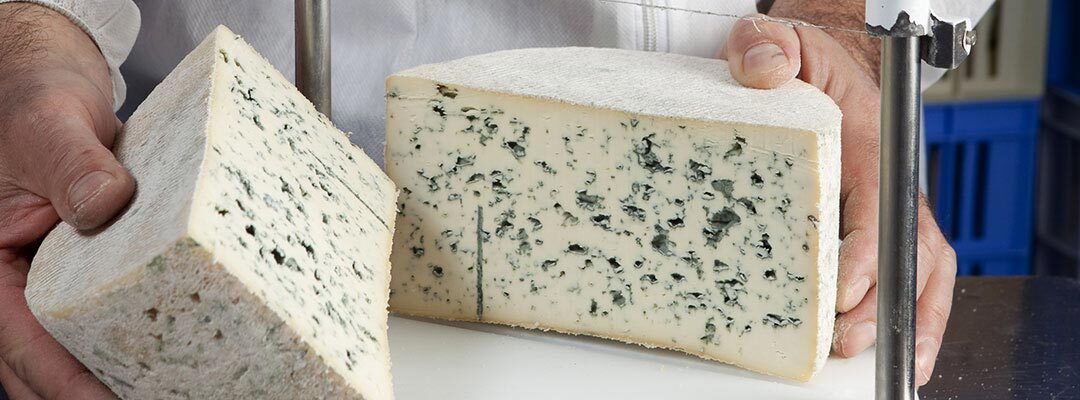Cheese Profile
This week’s selection is one of France’s great, classic cheeses. Bleu d’Auvergne comes from southern Central France, a part of France with green, volcanic mountains and a rich cheesemaking culture. This cheese has been coming out of the region since the mid-19th century, originally springing from one farmer, Antoine Russel. As legend goes, Antoine was looking for a specific kind of blue veining, and, after much experimentation, found the mold he grew on a loaf of rye bread produced the perfect cheese. In 1975, Bleu d’Auvergne was established as a protected cheese of the region (or AOC).
The simplest way of thinking of Bleu d’Auvergne is as Roquefort but made with cow’s milk rather than sheep’s milk. It’s among the more gentle, approachable blues, perfect for culinary applications or a cheese plate for a mixed crowd. I love Puy Laveze’s Bleu d’Auvergne, in particular, for its balanced, penetrating salt and the deep creaminess that plays well against the cheese’s spice. The cheese’s fine texture really melts in your mouth.
You’ll see a wide range of recommendations for serving: added to salad, hot pastas, with raw mushrooms or nuts; eat after dinner as a dessert course. You can have a lot of fun with wine pairings. Try a fuller-bodied, textured Rhône red or go sweet with a Sauternes or port.
Fun Fact
Cheese hero! Here’s to Eugène Ridel, the French engineer who invented those thin, round camembert boxes in the late 19th century. This allowed the cheese, previously stored on straw, to take on long journeys on rail through Europe, and, eventually, onto boats for worldwide distribution.

